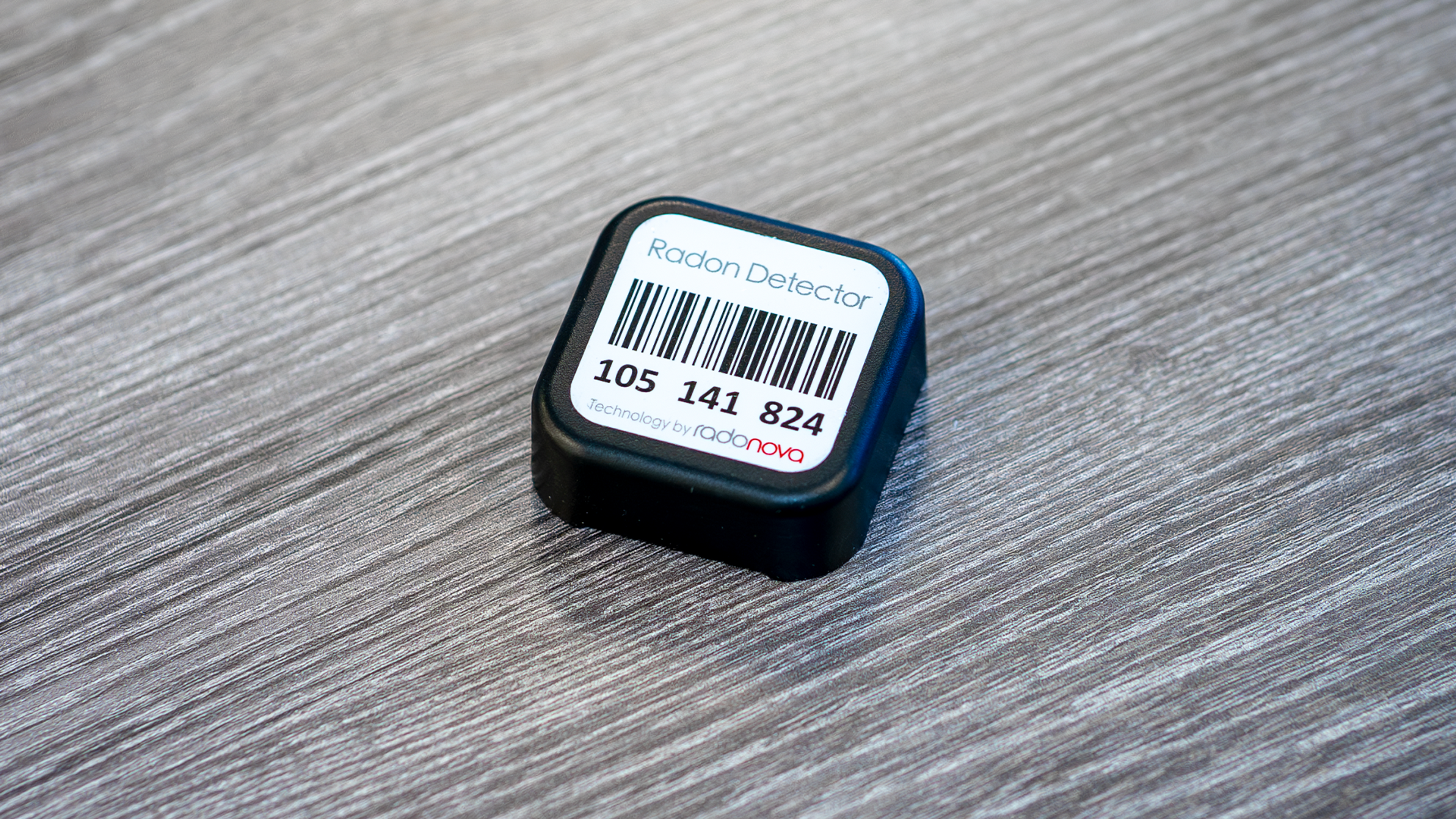

What are Alpha Tracks?
All detectors manufactured by Radonova incorporate alpha track technology (ATD), but what are alpha tracks?
The following video shows alpha particles being released from radon atoms in a cloud chamber created within the basement of a home that has a 100 pCi/l average radon level, 25 times the EPA recommended action level!
During the process of decaying, alpha particles containing 2 protons and 2 neutrons are released from the atomic nucleus of a radon atom. This particle leaves the nucleus at a blazing 15,000,000 meters per second, or about 5% the speed of light. Due to the particles mass, electric charge, and relatively low velocity, alpha particles are favorites to interact with other atoms and loose their energy pretty quick. Their forward motion can typically be halted within a few centimeters of normal air, as the embedded video shows.
This decay process will occur inside of our detectors. When the alpha particles are released from a radon atom, they collide inside with a CR39 chip and leave a ‘track’ (see images below). These tracks are then chemically etched, counted, and calculated using a custom algorithm to determine the total radon dose collected by the detector.
Tracks on CR39 chips as seen through a microscope.
Published
June 11, 2018




